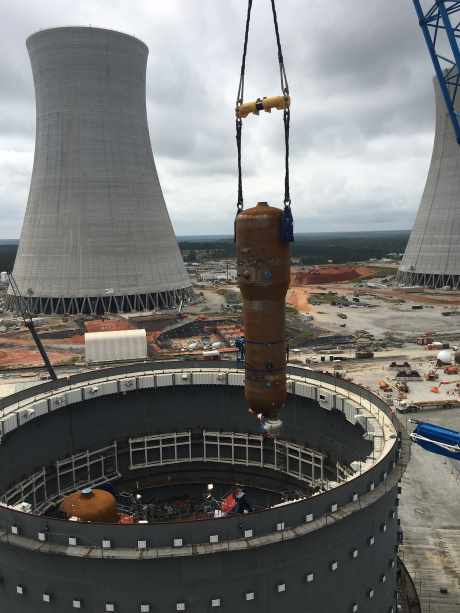The Nuclear Energy Institute (NEI) has called on US regulators to reform its reactor design certification process by removing an extra tier of information designations it describes as unnecessarily burdensome. The NEI says five years of experience at US construction projects have shown Tier 2* designations reduce flexibility while imposing additional burdens and complexity on both licensee and regulator, without adding any safety benefit.
The Washington, DC-based organisation has submitted a 32-page letter to US Nuclear Regulatory Commission (NRC) chairman Kristine Svinicki in which it calls for elimination of Tier 2* designations in the design certification process. The letter, signed by NEI vice president and acting chief nuclear officer Joseph Pollock, follows an initial recommendation to eliminate the designation made by the NEI to the NRC in 2014.
The NRC's process for the certification and construction of new reactors, under regulation 10 CFR Part 52, was introduced in 1989. The regulator subsequently approved the use of two tiers of design-related information and established separate procedures for signing off on any changes to that information, depending on the safety relevance of the changes.
 |
| Vogtle 3's second steam generator was lifted into place on 10 October. Experience at the AP1000 project has demonstrated the additional burden imposed by Tier 2*, NEI says. (Image: Georgia Power) |
Tier 1 information is considered to be more safety-relevant, with any changes requiring prior approval from the NRC. Changes to Tier 2 information can be made without prior NRC approval, provided that safety-focused criteria are met, in a similar process to the "50.59-like" process that is used in the operating nuclear fleet.
Tier 2* was introduced into the design certification process in the early 1990s, with the intention of minimising the scope of Tier 1 information. Like Tier 1 information, any design certification information with a Tier 2* designation requires prior NRC approval via a licence amendment for any changes, regardless of the safety significance of the change. Unlike Tier 1 information, changes to Tier 2* information do not require an exemption to the existing design certification.
Tier 2* should, in theory, have provided greater flexibility in making changes to information but in practice the level of effort required for changes to Tier 1 and Tier 2* information is nearly identical, NEI said.
Experience over the past five years at two AP1000 construction projects - Summer units 2 and 3 and Vogtle units 3 and 4 - has demonstrated the additional burden and additional costs imposed because of the Tier 2* designation as well as the potential that "emergent Tier 2* issues" could cause "needless" construction delays, the letter notes.
"An updated assessment of Tier 2* experience has shown that approximately 30% of licence amendment requests were required solely because of changes to Tier 2* information. Of those changes, approximately 90% would not have required an amendment if a '50.59-like' change process could be applied," Pollock said. The remainder would have required a licence amendment under the 50.59-like process in any case, so the Tier 2* designation was "duplicative and unnecessary", he said.
"Elimination of Tier 2* is a step that can and should be taken today to immediately benefit design certification applicants and to demonstrate timely, effective response to regulatory lessons learned," Pollock told the NRC.
Of the USA's two A1000 projects only Southern Company's Vogtle 3 and 4, in Georgia, remain under construction. Pollock urged the NRC to act "expeditiously" with Southern Company to identify the most timely and efficient course to relieve the project of "the continued unnecessary burden of Tier 2*".
David Jones, vice president of technical compliance at Southern Company subsidiary Georgia Power, said the company supported the NEI's effort to remove Tier 2* from future design certification applications. Near-term relief from the Tier 2* change process for Vogtle 3 and 4 would improve industry and regulator focus on "those aspects of construction which are truly safety-significant" without compromising NRC oversight, he said.
Researched and written
by World Nuclear News




_18570.jpg)
_16159.jpg)
_18938.jpg)
_33584.jpg)





